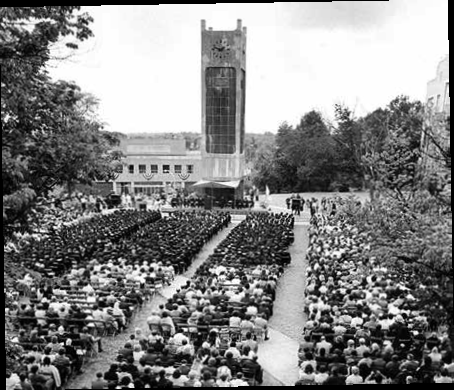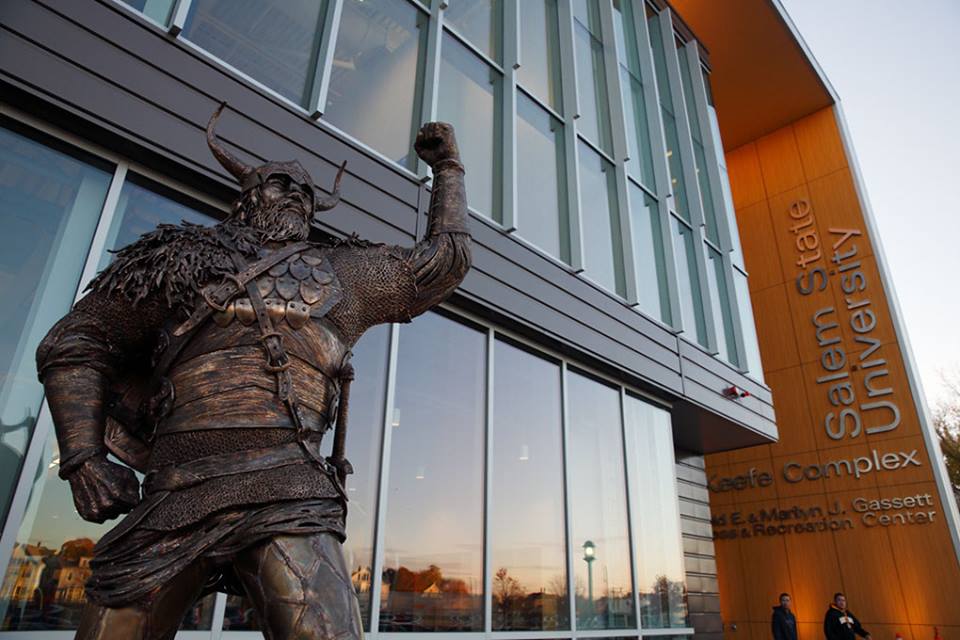|
 The evolution of Salem State University reflects the growth of its mission to provide a high-quality, student-centered public education to those who will become the next generation’s leaders. As the university has grown, so, too, has its mission. It serves today as an important resource to advance the region’s cultural, social and economic development and to prepare a diverse community of learners to contribute to our global society. From its beginnings as a small teaching college for women to the large, diverse and comprehensive academic institution it is today, Salem State continues to adapt to society’s changing needs while ensuring the intellectual and material well-being of the North Shore region of Massachusetts and beyond. The evolution of Salem State University reflects the growth of its mission to provide a high-quality, student-centered public education to those who will become the next generation’s leaders. As the university has grown, so, too, has its mission. It serves today as an important resource to advance the region’s cultural, social and economic development and to prepare a diverse community of learners to contribute to our global society. From its beginnings as a small teaching college for women to the large, diverse and comprehensive academic institution it is today, Salem State continues to adapt to society’s changing needs while ensuring the intellectual and material well-being of the North Shore region of Massachusetts and beyond.
Born of the humanitarian endeavors of Horace Mann, the institution originally known as Salem Normal School welcomed its first class of “young ladies who wish to prepare themselves for teaching” on September 14, 1854. Only the fourth such institution in Massachusetts and the tenth in America, it was welcomed by the city of Salem, which generously endowed its first site at One Broad Street. The city and school quickly developed a mutually beneficial partnership that continues to thrive.
Salem Normal School alumnae took community service well beyond Massachusetts’ borders. Charlotte Forten (class of 1856) was the school’s first African-American graduate to journey south during the Civil War to teach freed slaves in South Carolina. Well established by then as a forerunner in public higher education, its graduates instilled the values they learned at the normal school in elementary and high schools as far afield as Africa, the Middle East and Asia. As the demand for teachers increased nationwide, Salem Normal School prospered.
Following renovation of the Broad Street building in 1871, the school’s capacity doubled to keep up with increased demand. In 1896, it moved to an expanded campus in South Salem, which allowed for the introduction of a model training school housed in the Sullivan Building. In 1898, the student body became coeducational, although male enrollment remained small until the introduction of a commercial program in 1908. The curriculum, which combined professional business practice with pedagogical instruction, became the first of its kind in American public higher education.
In 1921, the course of study was lengthened from two to four years, and in 1932 Salem Normal School became Salem Teachers College. To accommodate the burgeoning enrollment, expansion continued and flourished with the addition of new programs and the construction of new buildings, including the administration building in 1959 and Meier Hall in 1964. Later that decade, a liberal arts program was added. The first residence halls opened in 1966.
Renamed Salem State College in 1968, new programs in business administration and nursing led to the acquisition of South Campus, including the former Loring Estate, in 1972. The next decades were marked by the continued growth of the physical plant. The 1997 purchase of an adjacent 37.5-acre site now houses the Bertolon School of Business, a recital hall, two green and sustainable residence halls, a dining facility, and a small business incubator.
On July 28, 2010, Massachusetts Governor Deval Patrick approved legislation that elevated Salem State College and eight other public institutions of higher education in the commonwealth to universities, and on October 26, 2010, Salem State College officially became Salem State University. Since then, the university has continued to add academic programs and majors in response to the work force needs of the commonwealth. Most recently, philosophy and dance majors were added as part of students’ liberal arts education.
In 2010, the university purchased property on Loring Avenue that now houses music rehearsal space, information technology services and additional university offices and services. In 2013 the Frederick E. Berry Library and Learning Commons on North Campus and the Harold E. and Marilyn J. Gassett Fitness and Recreation Center at the O’Keefe Complex were dedicated. The Sophia Gordon Center for Creative Arts will open in 2015 along with Viking Hall, which will house additional students on campus, and plans for the construction of a science facility are well underway.

The past two decades have seen record-breaking increases in fundraising and endowment and innovative technological advances that include the transition to a wireless campus, the creation of the laptop initiative and an online, virtual library. Salem State University’s evolution into a respected, comprehensive institution of public higher education owes its continued success to the vision of its faculty, students and staff, the partnership of community and university and the loyalties of alumni worldwide. The university currently serves nearly 10,000 undergraduate, graduate and continuing education students annually. One hundred and sixty-one years after its founding, Salem State continues to adhere to the tradition of excellence envisioned by its founders as it increases its impact on the region, within the commonwealth and—increasingly—across the globe.
|